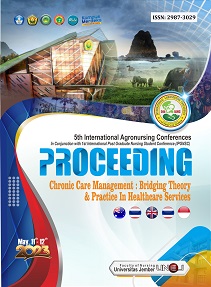EXPLORING THE MODEL AND THEORETICAL FRAMEWORKS OF CLINICAL PRECEPTORSHIP IN NURSING: A SCOPING REVIEW
Abstract
Introduction: Clinical preceptors play a crucial role in nursing education as they help students learn clinical preceptorship and grow into competent professionals. However, theories and models that specifically address preceptorship remain limited, even though such frameworks are essential for developing learning concepts, enhancing the role of preceptors, and supporting the learning process. Despite the existence of various theories and models related to preceptorship, there is no clear consensus on how they should be selected or applied across different clinical settings. Methods: This review identified existing theories and models relevant to clinical nursing preceptorship. The databases selected for this study were ScienceDirect, Google Scholar, Springer, PubMed, and ProQuest. The keywords used were: “Clinical” AND “Theory” OR “Model” AND “Preceptorship” AND “Nursing. The inclusion criteria encompass nurses involved in preceptorship—both novice and experienced—across various educational settings. The focus lies on theoretical frameworks such as social learning theory, competency theory, and adult learning theory, emphasizing their application in enhancing nursing competence and care quality. The context includes hospital-based, community, and global nursing education systems with varying resource levels.” Results: Of the 10 eligible articles included in this review, five distinct theories and five models were identified. The theories include Concept Analysis Theory, Social Identity Theory & Reflective Practice, Situated Learning Theory, Transition Theory, and Health System Responsiveness Theory. The models found were the Preceptorship Model for Botswana, the One-Minute Preceptor (OMP) Model, the Reflective Role Model of Preceptorship, the Leadership-Focused Preceptorship Model, and the Social Accountability Model. Conclusions: Although several theories and models are utilized to develop learning strategies, enhance clinical skills, and build effective relationships in clinical nursing preceptorship, each carries its strengths and limitations. The application of these frameworks remains relatively limited in both number and contextual relevance within clinical education environments. To generate a comprehensive body of literature, the selection of appropriate theories and models must align with the specific context and needs of clinical education. The findings highlight the need for continued study and application of these frameworks to improve the effectiveness of clinical education and ultimately support successful preceptorship and the quality of nursing education.








